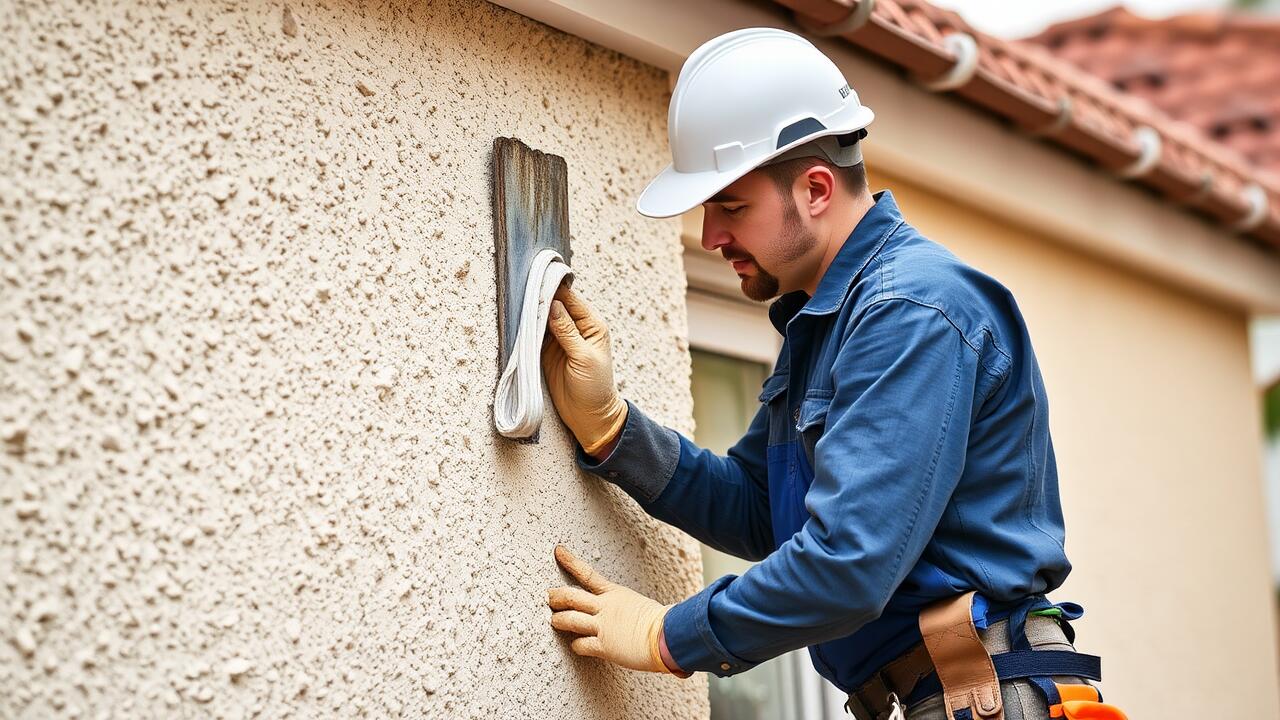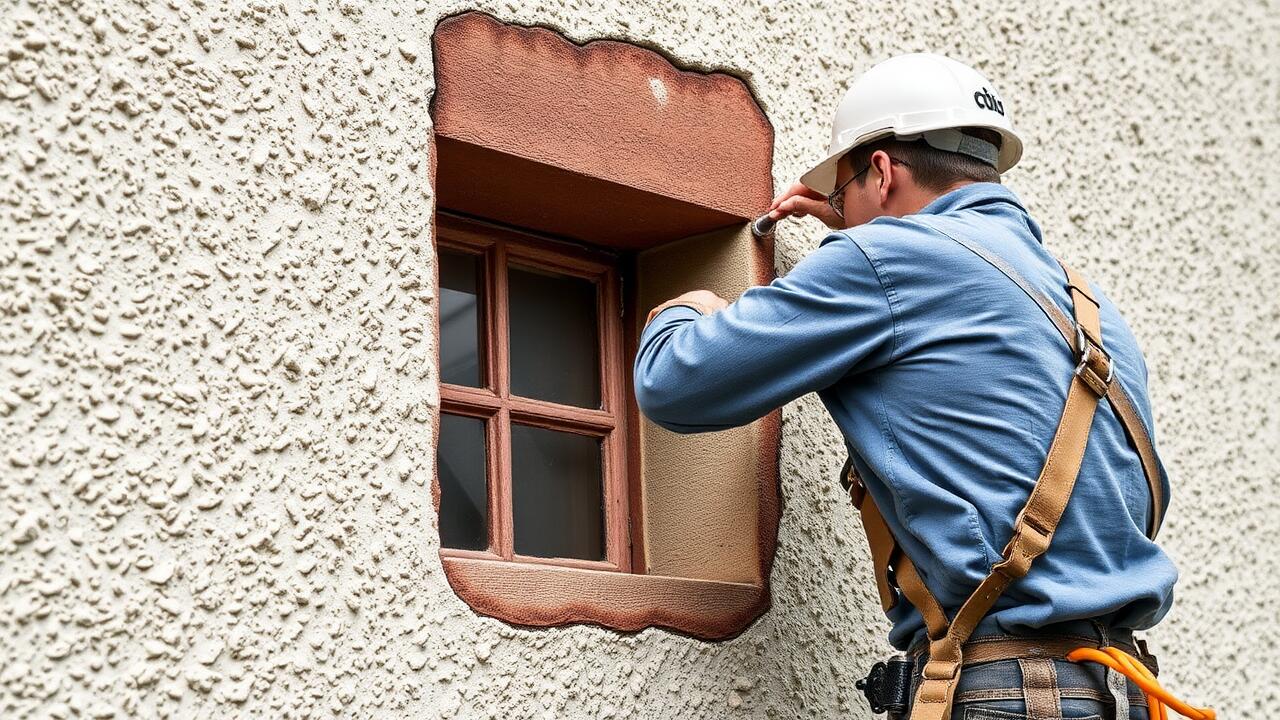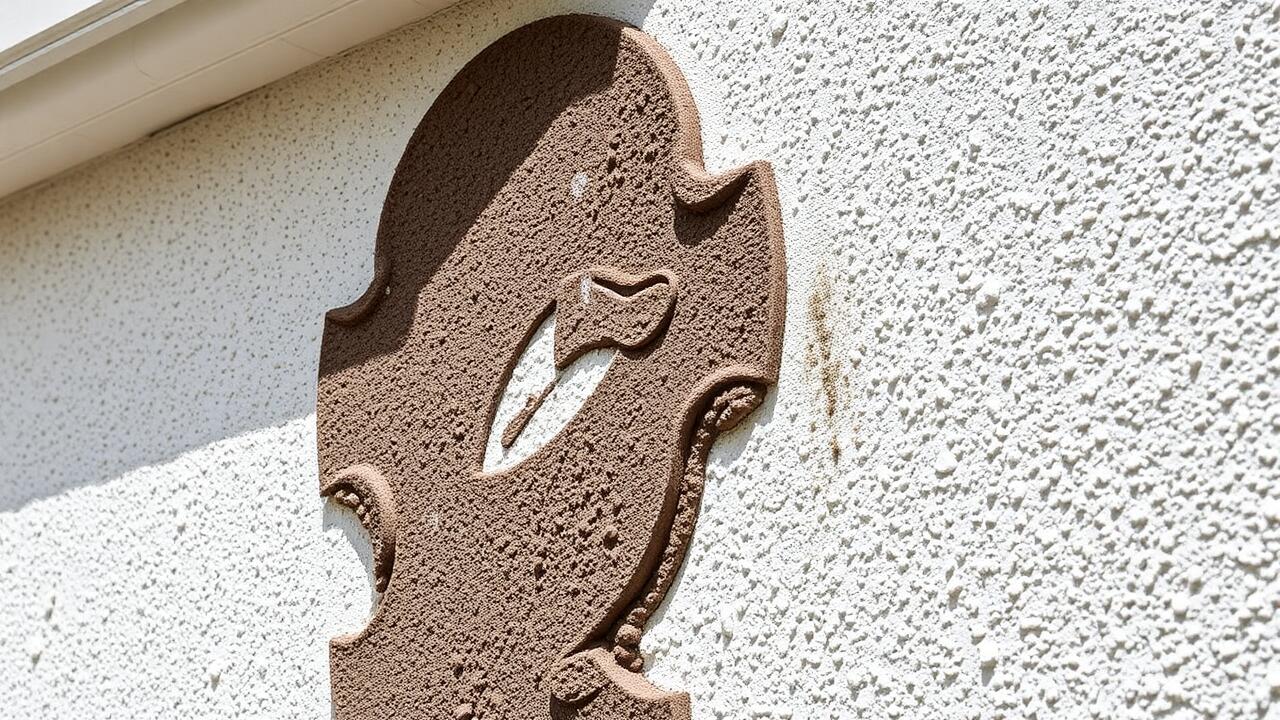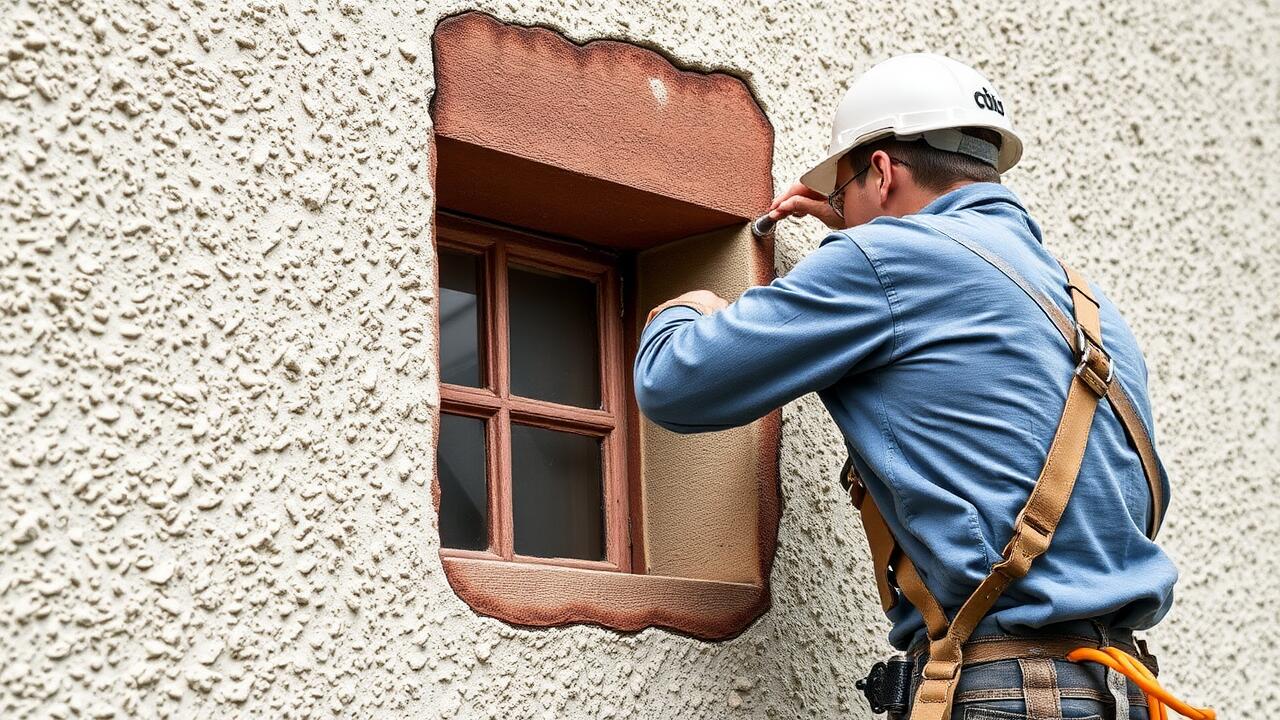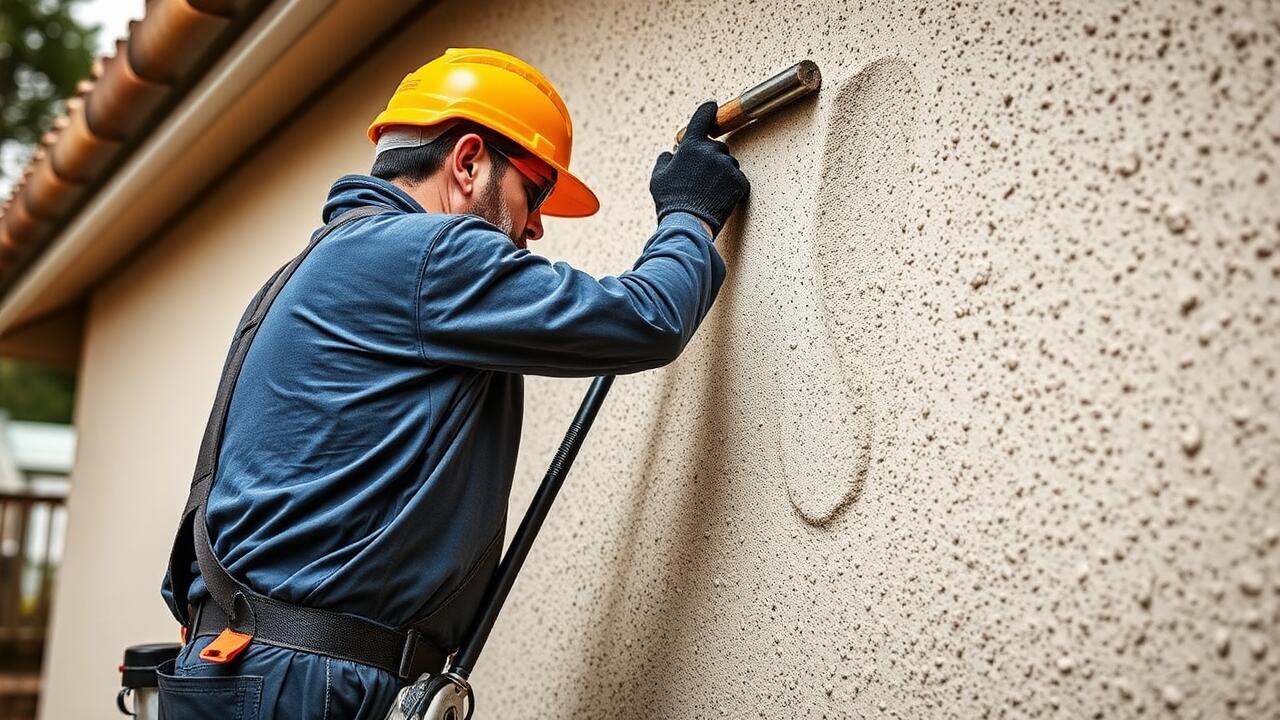
Signs You Have Bulging Stucco
Bulging stucco often manifests as noticeable bumps or bulges on the surface. Homeowners may first notice these irregularities when inspecting their walls from various angles. Cracks may accompany the bulging, indicating potential underlying issues. In some cases, paint may begin to peel or bubble, further signaling that the stucco requires attention. The sight of water stains or discoloration can also hint at moisture problems that contribute to stucco damage.
In Chatsworth, Los Angeles, such signs should prompt immediate evaluation to prevent further deterioration. Identifying the problem early can save homeowners from extensive repairs down the road. Observing any areas with a soft texture or increased movement can be crucial. These indicators suggest a compromised structure and may require a more thorough inspection by professionals specializing in stucco repair. Taking swift action can protect the overall integrity of the building.
Visual Indicators to Look For
When examining your stucco, look for noticeable bulges or warping on the surface. These distortions may indicate underlying moisture issues or structural problems. Cracks may also accompany bulging, which can worsen over time if left untreated. Regularly checking for these visual indicators is important to maintain the integrity of your home’s exterior.
In areas like Silver Lake Heights, Los Angeles, residents should be especially vigilant about stucco condition due to the region's unique climate. Changes in texture, such as pitting or peeling, can also signal that repairs are needed. Observing these symptoms early can prevent more extensive damage and costly repair work down the line.
Assessing the Extent of Damage
When assessing the extent of damage to bulging stucco, it's crucial to conduct a thorough inspection of the affected areas. Look for cracks, gaps, and the degree of bulging; these indicators will help you determine how serious the situation is. Checking for any signs of moisture intrusion can also be important, as water damage often contributes to stucco issues. By closely examining the integrity of the surface and nearby structures, you can gain a clearer understanding of how extensive the repair needs will be.
Homeowners in Chatsworth, Los Angeles Stucco Repair services should be contacted for a professional evaluation if the damage appears significant or widespread. These experts can perform a detailed assessment, identifying any underlying issues that may not be immediately visible. In some cases, a localized repair may suffice, while other situations may necessitate more comprehensive restoration efforts. Ensuring an accurate assessment is essential to formulate an effective repair strategy and avoid further complications.
Evaluating Severity Before Repair
Assessing the severity of bulging stucco is essential before deciding on a repair method. Homeowners should first examine the area for cracks, discoloration, or visible separation from the underlying structure. A thorough inspection may reveal whether the bulging is localized or widespread. Understanding the extent of the damage can help in determining the urgency of the repair and the potential costs involved.
In Chatsworth, Los Angeles, stucco repair professionals often recommend taking measurements to gauge the depth of the bulge. If the stucco has shifted significantly, it may indicate structural issues that require immediate attention. Engaging with a qualified local contractor can provide a clearer picture of the underlying causes and necessary steps to restore the integrity of the exterior. A professional assessment can also inform homeowners about whether a simple patching procedure will suffice or if more extensive efforts are needed.
Repair Techniques for Bulging Stucco
When dealing with bulging stucco, it is essential to first address the underlying causes of the issue before initiating repairs. Investigate areas where moisture may be trapped, as this is often a primary contributor to bulging. After identifying and rectifying any issues such as faulty flashings or drainage problems, the next step involves assessing the damage. In some cases, minor bulging can be fixed with simple patchwork, while more extensive damage may require replacing sections of the stucco. Utilizing services specialized in Chatsworth, Los Angeles stucco repair can ensure that the work is done effectively and up to code.
The repair process itself requires careful execution to avoid further complications. Begin by removing any damaged stucco around the bulging areas to expose the underlying mesh and framing. Clean the area thoroughly to prevent future moisture buildup. Once prepared, apply a new layer of stucco, ensuring a seamless blend with the existing surface. It is crucial to follow proper curing techniques to maintain the integrity of the repair. Enlisting professionals who understand the specific climate implications of Chatsworth, Los Angeles, can provide additional insights and techniques tailored to the location's weather conditions.
Step-by-Step Repair Process
To begin the repair process for bulging stucco, gather the necessary tools and materials. This includes a chisel, hammer, trowel, and specific stucco mix appropriate for your home. Carefully remove loose or damaged stucco from the affected area. It is essential to clear away any debris and dust to ensure proper adhesion of the new material. Once the area is prepped, apply a bonding agent if your repair material requires one.
Next, mix the stucco according to the manufacturer’s instructions. Apply the new stucco into the prepared area using a trowel, ensuring it fills any gaps and matches the existing texture. Allow the stucco to cure as recommended, which may take several days. For those residing in the Chatsworth, Los Angeles area, hiring professional stucco repair services can ensure a seamless finish and prevent future issues. After curing, a coat of sealant can provide added protection against weather elements.
FAQS
What are the common signs of bulging stucco?
Common signs of bulging stucco include visible cracks, uneven surfaces, and areas that appear to be pushing outward from the wall. You may also notice water stains or a musty odor, indicating possible moisture issues behind the stucco.
How can I assess the extent of damage to my stucco?
To assess the extent of damage, visually inspect the stucco for cracks and bulges, and tap on the surface to check for hollow sounds, which can indicate delamination. Additionally, consider using a moisture meter to determine if there’s trapped moisture behind the stucco.
What repair techniques can be used for bulging stucco?
Repair techniques for bulging stucco typically include reattaching loose areas, filling in cracks with stucco patching material, and, in severe cases, removing and replacing sections of stucco. It's essential to address any underlying moisture issues before performing repairs.
Should I hire a professional for stucco repairs, or can I do it myself?
Whether to hire a professional or do it yourself depends on the extent of the damage. Minor repairs can often be handled by a skilled DIYer, but significant bulging or structural issues typically require a professional to ensure proper repair and prevention of future problems.
How can I prevent bulging stucco from occurring in the future?
To prevent bulging stucco, ensure proper drainage around the foundation, maintain gutters and downspouts, and regularly inspect and maintain the stucco surface. Addressing any moisture problems promptly can also help prevent damage.
